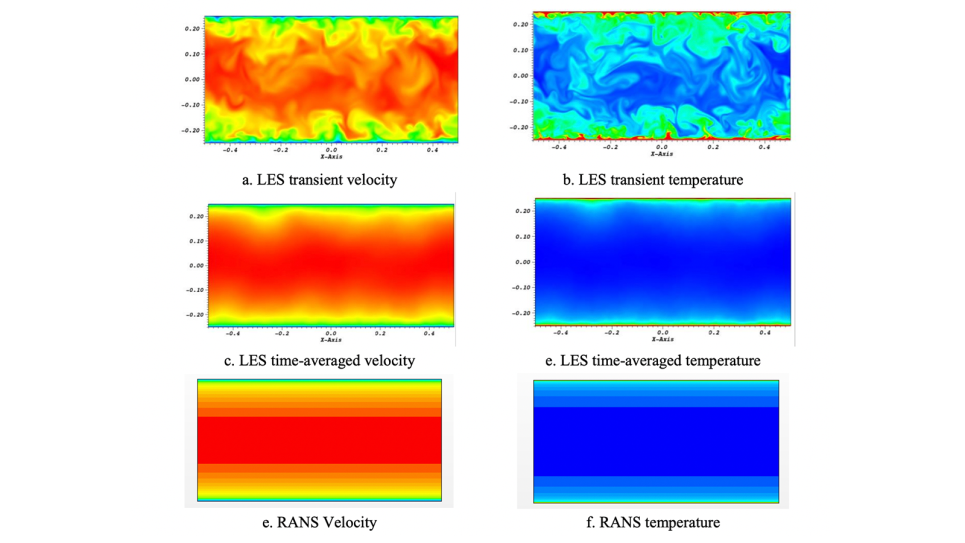
Velocity and temperature field predicted by LES and RANS.
The simulations in this project will be performed with both Nek5000 and NekRS expanding their application to the Research Reactor Conversion Program.
The Materials Management and Minimization (M3) Reactor Conversion Program of the National Nuclear Security Administration (NNSA) is supporting the conversion of research reactors from Highly Enriched Uranium (HEU, 235U / U ≥ wt. 20%) fuel to Low Enriched Uranium (LEU, 235U / U < wt. 20%) fuel. The reactors that utilize involute shaped fuel elements share a similar configuration of coolant channel, which is of extremely thin and involute shape. Better understanding of flow behavior and heat transfer in these coolant channels is important for design of LEU fuel elements.
Reynolds-averaged Navier–Stokes (RANS) approaches have exposed both practicality and limitations on the prediction of turbulent flows. Discrepancies are seen in RANS simulations with different turbulence models, flow conditions and codes. Due to the lack of relevant experimental data, it is difficult to quantify the uncertainty introduced by these turbulence models. Performing high fidelity simulation (LES&DNS), uncovers behavior of turbulent flows with fewer modeling assumptions and can thus potentially provide more reliable benchmark for engineering predictions and thus more accurate thermal hydraulic safety analysis. Moreover, the data from the high fidelity simulations can be used to improve the coefficients used in system codes. LES data enrichment are essential for understanding the fundamental mechanism of flow and heat transfer behavior in an involute plate research reactor under various conditions.
The simulations in this project will be performed with both Nek5000 and NekRS. The codes are developed as part of the High-Order Methods for High-Performance Multi-physics Simulations project supported by the DOE Applied Math Research base program as well as a collaboration with Nuclear Energy Advanced Modeling and Simulation (NEAMS) program. This project expands their application to the Research Reactor Conversion Program and attract more attention from either industry partner or university to NEAMS code as a surrogate for expensive commercial code.